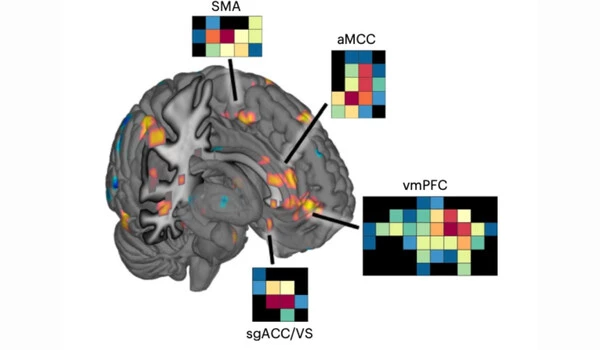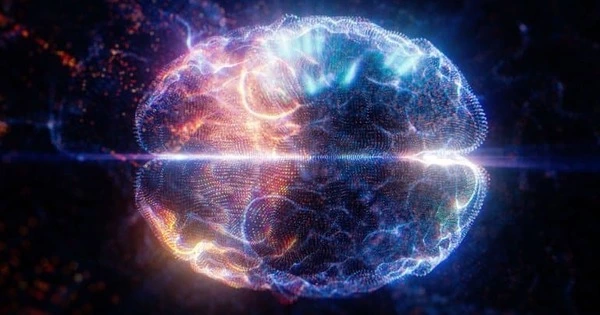Craving is a well-known factor in substance use disorders, and it can increase the likelihood of future drug use or relapse. However, its neural basis or how the brain causes craving – is not well understood. Researchers from Yale, Dartmouth, and the French National Centre for Scientific Research (CNRS) have discovered a stable brain pattern, or neuro markers, for drug and food cravings in a new study. Their research was published in the journal Nature Neuroscience.
According to the researchers, the discovery could be a significant step toward understanding the brain basis of craving, addiction as a brain disorder, and how to better treat addiction in the future. Importantly, this unremarked may also be used to differentiate drug users from non-users, making it not only neuro markers for craving but also a potential neuro marker that may one day be used in the diagnosis of substance use disorders.
Many diseases have biological markers that doctors can use to diagnose and treat patients. Doctors, for example, use a blood marker called A1C to diagnose diabetes.
“One advantage of having a stable biological indicator for a disease is that you can then give the test to any person and say whether or not they have that disease,” said Hedy Kober, an associate professor of psychiatry at Yale School of Medicine and one of the study’s authors. “And we don’t have that for psychopathology, and certainly not for addiction.”
One advantage of having a stable biological indicator for a disease is that you can then give the test to any person and say whether or not they have that disease. And we don’t have that for psychopathology, and certainly not for addiction.
Hedy Kober
Kober and her colleagues, Leonie Koban from CRNS and Tor Wager from Dartmouth College, used a machine learning algorithm to see if such a marker for craving could be established. Their hypothesis was that if many people with similar levels of craving share a pattern of brain activity, a machine learning algorithm might be able to detect that pattern and use it to predict craving levels based on brain images.
To train and test the machine learning algorithm, they used functional magnetic resonance imaging (fMRI) data which provides insight into brain activity, and self-reported assessments of craving from 99 people. The fMRI data were collected while the individuals – who identified themselves as either drug users or non-users – viewed images of drugs and highly palatable food. The participants then rated how strongly they craved the items they saw.
The algorithm identified a pattern of brain activity that could be used to predict the intensity of drug and food craving from fMRI images alone, the researchers said. The pattern they observed – which they dubbed “Neurobiological Craving Signature (NCS)” – includes activity in several brain areas, some of which previous studies have linked to substance use and craving. However, the NCS also provides a new level of detail, showing how neural activity within subregions of these brain areas can predict craving.

“It gives us a really granular understanding of how these regions interact with and predict the subjective experience of craving,” said Kober.
The NCS also revealed that brain responses to drug and food cues were similar, implying that drug craving is generated by the same neural systems as food craving. Importantly, the marker could tell the difference between drug users and non-users based on their brain responses to drug cues but not to food cues.
“And these findings are not limited to a single substance because we included participants who used cocaine, alcohol, and cigarettes, and the NCS predicts craving across all of them,” Kober explained. “As a result, it is a biomarker for craving and addiction. Something common to all of these substance use disorders is captured in a craving moment.”
Wager also points out that emotional and motivational processes that might seem similar actually involve different brain pathways and can be measured in different ways. “What we’re seeing here is likely not a general signature for ‘reward,'” he said, “but something more selective for craving food and drugs.”
In addition, the NCS also offers a novel brain target to better understand how food and drug craving might be influenced by context or by emotional states. “For example,” said Koban, “we can use the NCS in future studies to measure how stress or negative emotions increase the urge to use drugs or to indulge in our favorite chocolate.”
While the NCS is promising, Kober notes that it requires further validation and is not yet ready for clinical use. That is most likely a few years away. Now, she and her colleagues are working to better understand this network of brain regions and see if the NCS can predict how people with substance use disorders will respond to treatment.
According to her, this neuro markers would be a powerful tool for informing treatment strategies. “Our hope is that the brain, and specifically the NCS as a stable biological indicator, will allow us to not only identify who has a substance use disorder and understand the variance in people’s outcomes, but also who will respond to specific treatments,” said Kober.





